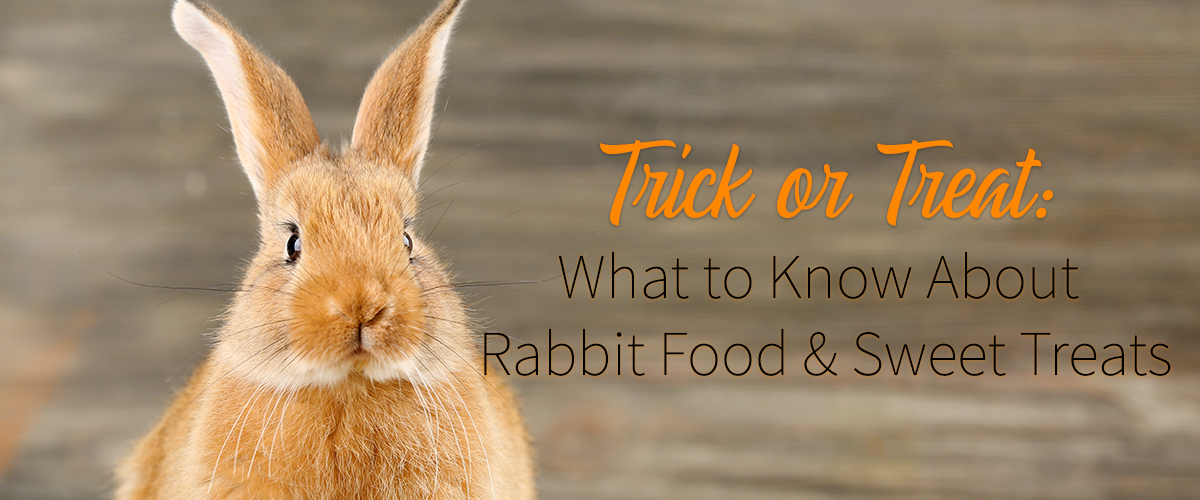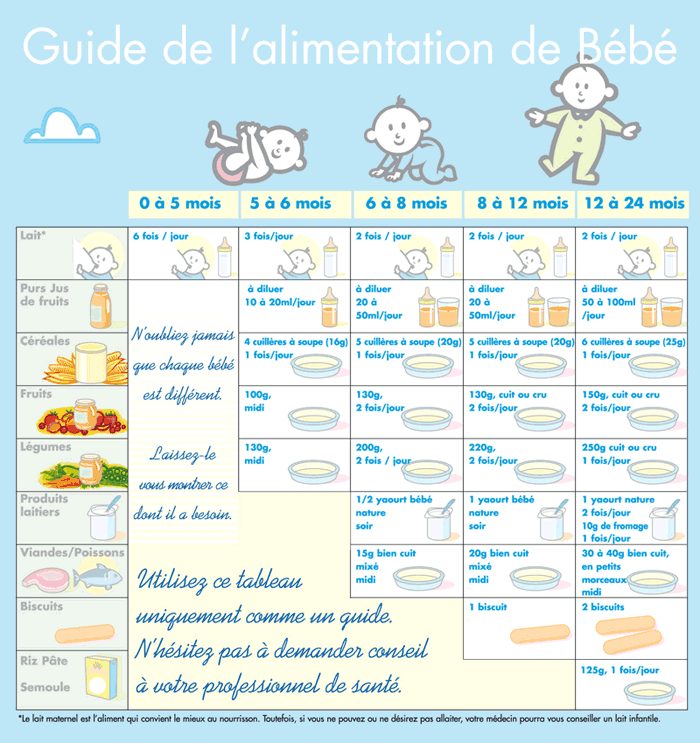Baby food with nuts
How to Introduce Nuts to Baby (purees & baby-led weaning)
Here are 10 safe ways to introduce peanuts, almonds, cashews and other nuts and seeds to your baby! In this guide, you will learn how to safely introduce nuts and seeds to your baby – when you should introduce them, which nuts you can introduce first, and our favorite easy baby-friendly recipes for both purees and baby-led weaning.
Medically reviewed and co-written by Jamie Johnson, Registered Dietitian Nutritionist (RDN), and Lauren Braaten, Pediatric Occupational Therapist (OT).
Nuts for BabyThere is no doubt about it – introducing nuts to baby can be scary!
Not only are nuts a choking hazard they are also one of the top eight allergens. 😱
But don’t worry, in this guide, we will go over all the information you need to feel confident in serving nuts 🥜 to your baby.
In this guide, you’ll find:
- Benefits of Nuts for Baby
- When to Introduce Peanuts and other Nuts to Baby
- What Nuts Can be Introduced to Baby
- Are nuts a choking hazard for baby?
- Are nuts a common allergen?
- How to Introduce Nuts to Baby
- How to Introduce Nuts in a Puree
- How to Introduce Nuts for Baby-Led Weaning
- 4 Feeding Tips when Introducing Nuts
- Recipes
Nuts have tons of nutrients and health benefits and can be incorporated into baby’s diet countless ways.
Different nuts have different nutrient profiles, but in general, nuts are high in fat, which is important for a baby’s growth and development. In addition, they all contain protein, vital for muscle growth and tissue repair, and fiber, which helps keep the digestive system healthy. Nuts also contain calcium, iron, folate, vitamin E, zinc, and many other micronutrients.
When to introduce peanuts and other nuts to babyThe latest recommendations from the American Academy of Pediatrics, National Institute of Health and the American Academy of Allergy, Asthma, and Immunology all recommend introducing nuts and peanuts right after baby starts solid foods, around 4-6 months, to help prevent food allergies from developing, unless your baby has a history of eczema or food allergies. If this is the case, your pediatrician will advise you on when to introduce nuts, likely around 6 months, after an allergy evaluation.
WHAT NUTS CAN BE INTRODUCED TO BABYAll nuts (and seeds) can be introduced to baby in a safe way.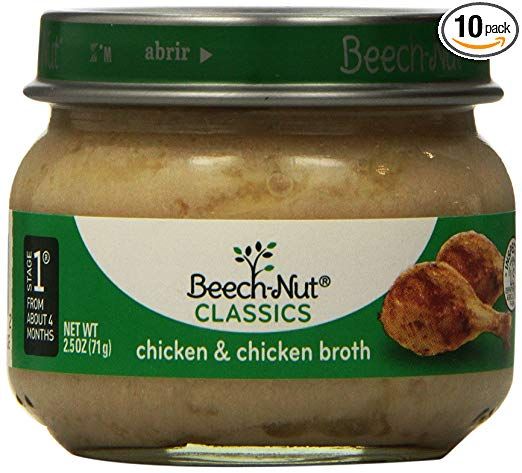 Some common nuts/seeds to feed baby are:
Some common nuts/seeds to feed baby are:
- Peanuts
- Almonds
- Flaxseeds
- Chia seeds
- Cashews
- Sunflower seeds
- Sesame seeds
- Hemp seeds
- Hazelnuts
- Pine nuts
- Macadamia nuts
- Pistachios
You can make your own nut butter or buy a store-bought brand of any of the nuts or seeds above. If using a store-bought brand, just make sure it is free from any additives such as sugar, salt, oils, or preservatives – it should only contain the nut or seed you which to introduce.
Ground Nuts and SeedsYou can also serve finely ground nuts or seeds to your baby sprinkled on top of a puree, oat cereal, avocado, banana, or other solid food. To grind the nuts or seeds, you can either place a small handful into a blender or food processor and pulse until you have tiny pieces. Check the nut size when pulsing them every 20 seconds as you don’t want to make a nut paste or nut butter. You can also place a small number of nuts on a cutting board and finely chop them. Once you have your finely chopped nuts or seeds, you can sprinkle them onto a portion of food, leave them as is, or stir to incorporate.
You can also place a small number of nuts on a cutting board and finely chop them. Once you have your finely chopped nuts or seeds, you can sprinkle them onto a portion of food, leave them as is, or stir to incorporate.
Nut Butter Tip: if your nut butter is too thick and clumpy, you can place a small amount in a microwave-safe bowl and heat in 20 intervals, stirring each time, until just warm. The heat will help the nut butter smooth out and become thinner.
Are nuts a choking hazard for your baby?Whole nuts are a choking hazard and should not be given to children under 4. Chunky nut butter with large globs should also be avoided because it can also be a choking hazard. Serve nuts in the form of puffs, nut powder, finely chopped, flours, thinned nut butter, or in purees to be safe.
Are nuts a common allergen?Tree nuts and peanuts are both considered top food allergens so just be aware of any reactions baby may have when feeding foods with nut ingredients in them. Reactions can happen within minutes to hours after feeding so its best to serve them at a time when you can observe your child for a few hours after, rather than at dinner time. Some symptoms of a reaction include itchy rashes, hives, vomiting, trouble breathing, swelling of the lips and tongue, and anaphylaxis. Call your pediatrician of any of these develop, or 911 if your child is experiencing anaphylaxis. Seeds are less likely to be an allergen.
Reactions can happen within minutes to hours after feeding so its best to serve them at a time when you can observe your child for a few hours after, rather than at dinner time. Some symptoms of a reaction include itchy rashes, hives, vomiting, trouble breathing, swelling of the lips and tongue, and anaphylaxis. Call your pediatrician of any of these develop, or 911 if your child is experiencing anaphylaxis. Seeds are less likely to be an allergen.
There are several different ways to prepare nuts for your baby! You can incorporate nut butters into a smooth puree, a combination puree, as nut butter thinly spread on toast for baby-led weaning or in a smoothie. You can also sprinkle finely chopped nuts on a slice of banana, avocado, sweet potato wedges or into oatmeal or yHere are some of my favorite ways to introduce peanuts and nuts to your baby:
4-6 Months- Yogurt with nut butter
- Chunky banana puree with almond butter and a pinch of cinnamon (can make as smooth or as chunky as you prefer)
- Warm apple puree with peanut butter
- Nut butter on the tip of your finger
- Oat cereal with peanut butter or sprinkle of chopped nuts
- Nut-based puffs
- Chunky banana puree with almond butter and cinnamon
- Nut butter thinly spread on toast, pancakes or waffles
- Homemade bread or muffins baked with almond flour
- Pasta tossed with pesto
- Chunky oatmeal with peanut butter
- Nut-based puffs
- Strawberry banana smoothie with nut butter
It’s easy to add in any nut or seed butter to almost any puree your baby prefers. Here are some of my favorite purees to add it into:
Here are some of my favorite purees to add it into:
- Yogurt
- Banana Puree
- Apple Puree
- Oat Cereal
- Sweet Potato Puree
- Broccoli Puree
- Apple, Carrot + Sweet Potato Puree
- Apple + Kale Baby Food Puree
- Banana, Cherry + Beet Baby Food Puree
- Nut-based puffs
- Pasta tossed with pesto (if making at home, you can change which nuts or seeds you use as the base)
- Toast with a thin spread of nut butter
- Chunky oatmeal with nut butter
- Strawberry banana smoothie with nut butter
- Finely chopped nuts sprinkled on Banana, Avocado or Roasted Sweet Potato Wedges
- Mixed into the batter of banana pancakes
- Serve Nuts Earlier in the Day: When you plan to introduce a type of nut, offer them earlier in the day at breakfast or lunch, so you can monitor your baby for any reactions that might arise.

- An Exposure can be a Small Amount: You don’t need to worry about forcing your baby to consume a large serving in order to determine if there is a reaction.
- Spread Thin and Stir Well: Since globs of nut butter are choking hazards for babies and young children, make sure to spread it thinly on toast or crackers. It’s also important to stir the nut butter until well blended with purees such as oatmeal or applesauce. If your nut butter is too thick, try placing it in a small bowl and heating it in the microwave until just warm, stir and then add to purees or spread on toast.
- Keep it on the Menu: Once you’ve introduced a particular type of nut into your baby’s diet, aim to include it in your baby’s weekly meal plan. This can help decrease the likelihood of developing an allergy later on in life.
Recipes
Chunky Banana Puree with Almond Butter + Cinnamon
- 1/2 ripe banana
- 1/4-1/2 tsp nut butter (almond, peanut, cashew, etc.
 )
) - pinch cinnamon
Warm Applesauce with Peanut Butter
- 1/4 cup applesauce or apple puree, store-bought or homemade
- 1/4-1/8 tsp nut butter (peanut, almond, cashew, etc.)
Yogurt with Nut Butter
- 1/4 cup whole milk plain yogurt
- 1/4-1/2 tsp nut butter (cashew, almond, peanut, etc.)
Nut Butter on Tip of your Finger
- 1 dollop nut butter (peanut, almond, cashew, etc.)
Nut Butter on Toast
- 1 piece toated whole-grain bread, pancake or waffle
- 1/4 tsp nut butter (peanut, almond, cashew, etc.)
Strawberry Banana Smoothie with Peanut Butter
- 1/2 ripe banana
- 4-5 frozen frozen strawberries
- 1/2 tsp nut butter (peanut, almond, cashew, etc.)
- 3 ice cubes
- 12/-1 cup milk of choice (regular, formula, breast milk or plant-based)
Ground Nuts on Banana
- 1 tbsp nuts (peanut, almond, cashew, etc.
 )
) - 1/2 banana
Pesto Pasta
- 1-2 tbsp pesto, homemade or store-bought
- 1 cup cooked pasta
Oat Cereal with Nut Butter
- 1 cup water
- 1/2 cup old-fashioned oats
- 1 tbsp nut butter (peanut, almond, cashew, etc.)
Chunky Banana Puree with Almond Butter + Cinnamon
On a cutting board or small bowl, mash the banana with the back of a fork until chunky or smooth (depending on which consistency you prefer), add in the nut or almond butter and a pinch of cinnamon. Mix until completely incorporated and serve.
Warm Applesauce with Peanut Butter
In a small bowl, add in the applesauce or apple puree. Drizzle in the peanut butter (or any nut butter). Place the bowl in the microwave and warm in 10-second intervals, stirring in-between cooking times, or until just warmed. The peanut butter will melt a little bit, making it easy to mix until fully incorporated.

Yogurt with Nut Butter
In a small bowl, add in the yogurt and cashew butter (or any nut butter). Lightly swirl the cashew butter on top and serve.
Nut Butter on Tip of your Finger
Nut Butter on Toast
Toast a piece of whole wheat bread and lightly butter one side. Cut the crust off on one side of the bread (babies can sometimes have a hard time gumming the crust), then spread a small amount of peanut butter (or any nut butter) on the crustless end of the toast. You can also use pancakes or waffles with this recipe.
Strawberry Banana Smoothie with Peanut Butter
In a blender, add in banana, frozen strawberries, peanut butter (or any nut butter), ice cubes and milk and blend on high until completely smooth, adding more milk if needed.
Ground Nuts on Banana
Place the nuts on a cutting board and chop until finely ground. Alternatively, you can place a larger portion in the blender or food processor and pulse until they are finely ground.
 Make sure to check every 20-30 seconds to make sure you don't over-grind them into a nut butter.
Make sure to check every 20-30 seconds to make sure you don't over-grind them into a nut butter. Cut a banana in half. 2 inches from the end of the banana, slice the peel gently all the way around. Take the ring of peel off. Sprinkle the exposed banana with the finely ground nuts.
Note: you can also sprinkle finely ground nuts on avocado, sweet potato wedges, oatmeal, puree, etc.
Pesto Pasta
Oat Cereal with Nut Butter
In a small saucepan pan, bring the water to a boil. Add in the oats and peanut butter and turn the heat down to a low. Simmer for 8-10 minutes or until the water has been absorbed and the oats are cooked.
For a Puree: transfer the oats to a blender or food processor and blend until smooth or your desired consistency.
For Baby-Led Weaning: spoon the oats onto a place in small 2-3 inch circles.
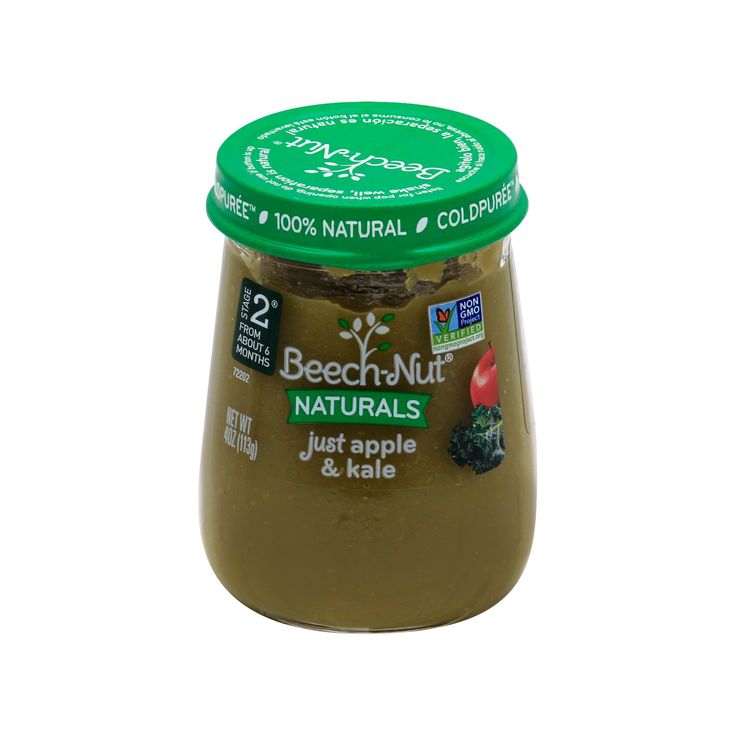 Place the plate in the fridge to cool. As the oats cool they will hardern, which makes it easier for baby to pick up and eat.
Place the plate in the fridge to cool. As the oats cool they will hardern, which makes it easier for baby to pick up and eat. In the picture, I show the peanut butter swirled on top so you can see it. You can also serve it like this or just mix it in while cooking.
Age: see list above
Yield: each recipe will give you 1-2 baby servings.
Nuts: All nuts (and seeds) can be introduced to your baby in a safe way. Some common nuts/seeds to feed baby are:
- Peanuts
- Almonds
- Flaxseeds
- Chia seeds
- Cashews
- Sunflower seeds
- Sesame seeds
- Hemp seeds
- Hazelnuts
- Pine nuts
- Macadamia nuts
- Pistachios
Did you make this recipe?
Tag @babyfoode on Instagram and hashtag it #babyfoode!
Pin Recipe Email a Friend
When to Introduce and Simple Ways to Do It
Introducing your baby to new foods sounds fun — in theory. But when it comes time to actually do it, it can also be kind of scary — especially if you’re introducing a potential allergen, like tree nuts and peanuts.
But when it comes time to actually do it, it can also be kind of scary — especially if you’re introducing a potential allergen, like tree nuts and peanuts.
We get it. And there’s no sugar coating it: You’re going to be nervous the first time. (And probably the second, third, and fourth time, too.)
But here’s a little bit of good news: Early introduction to allergenic food (like nuts) can actually help protect your little one from allergies. So it’s best to introduce them soon after you start feeding your baby solid foods, around 4 to 6 months.
Parents in the United States and other Western countries used to wait to introduce peanuts and tree nuts, such as cashews, almonds, and walnuts.
Then a 2016 study found that in Israel, a country where infants were frequently fed peanuts very early, peanut allergies were rare: The prevalence was just 0.17 percent compared to 1.4 percent in the United States and 1.7 percent in the United Kingdom.
These findings were confirmed with several groundbreaking clinical trials, most notably the LEAP trial.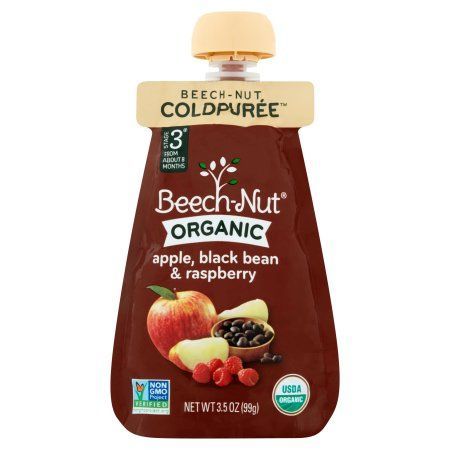 It found that introducing peanut-containing foods to infants between the ages of 4 and 11 months reduced the chances of developing an allergy by more than 80 percent — that’s huge!
It found that introducing peanut-containing foods to infants between the ages of 4 and 11 months reduced the chances of developing an allergy by more than 80 percent — that’s huge!
This is because your baby’s immune system is developing during this time.
“As the immune system is developing, we want to intentionally introduce highly allergenic foods and continue to expose the immune system to [them] so that the immune system is trained to recognize [them] as ‘friendly’ and not a threat,” explains Dr. Yan Yan, a board certified pediatrician and allergist with Columbia Allergy.
If this doesn’t happen, your baby’s immune system might later perceive nuts as dangerous and overreact, resulting in an allergic reaction.
That’s why the American Academy of Pediatrics (AAP), the National Institute of Health (NIH), and the American Academy of Allergy, Asthma, and Immunology (AAAAI) have all changed their guidelines for parents.
The short answer: Unless your baby has a history of eczema or food allergies, they can try nuts shortly after they start solids — as early as 4 to 6 months.
Just make sure that once you start (and they don’t have a reaction), you keep it up.
“Studies suggest sustained exposure is just as important as early introduction,” says Dr. Jessica Hochman, FAAP, board certified pediatrician and member of the scientific advisory board for Ready, Set, Food. “Parents must continue introducing allergens many times a week for several months.”
There are lots of options. You can try giving your baby peanut puffs (e.g., “Bamba” puffs) that are kind of like peanut cheetos and dissolve easily when your baby sucks on them. They can also be dissolved into your baby’s other foods, including breast milk.
You can use nut powders and sprinkle them into your baby’s food, or you can bake with nut flours.
Nut butters (like peanut butter or almond butter) are great too, but it’s important to introduce them safely. Because nut butters can be very thick and sticky, large globs could be choking hazards.
“Spread them thinly on a soft cracker or strip of banana, stir them into oatmeal, add them to yogurt, or thin them out with a little water and offer small amounts at a time on a spoon,” says Megan McNamee, a pediatric registered dietitian nutritionist and co-owner of Feeding Littles.
However you introduce them, just make sure you start with a small amount (roughly 1/4 tsp or less) until you know how your baby will react.
Always buy smooth nut butters without any chunks of nuts. And look for butters and products with as few ingredients as possible.
“Fewer ingredients can make it easier to determine what a child reacted to should an allergic reaction occur after consuming the nut butter,” says Yan.
Fewer ingredients also mean you can avoid added sugars, which are generally recommended you avoid for your child’s first 2 years of life.
You might also want to look for butters with lower sodium content because your baby shouldn’t be getting more than 0.4 grams of sodium daily before they’re 12 months old.
“Whole peanuts and nuts are a choking hazard to children under 4 because if they are not chewed well and are inhaled into the lungs, they can block their air passages,” explains Dr. Florencia Segura, FAAP, a board certified pediatrician with Einstein Pediatrics.
Children have died choking on whole nuts, she adds, because the pieces blocked the whole airway.
In fact, that’s why new guidelines from multiple leading allergy organizations recommend not giving whole nuts to children before their fifth birthday.
In general, “Nuts are a good source of fat, which is important for growth and development,” McNamee says. “They are tasty foods that help us feel satisfied when we eat them.”
That’s partly because they’re also good sources of protein and fiber.
“Walnuts specifically contain more omega-3 fatty acids, which are important for brain and eye development,” McNamee adds.
Cashews are also a good source of omega fats, as well as copper (which is essential for iron absorption), magnesium, and amino acids that power cell growth.
Meanwhile, almonds are a great source of fiber, plant-based protein, and monounsaturated fats (the same kind of heart-healthy fats found in other superfoods, like avocado and olive oil). They’re also high in other vitamins and minerals, including:
They’re also high in other vitamins and minerals, including:
- calcium
- iron
- folate (which is great for metabolism)
- vitamin E
- zinc (a powerful antioxidant)
And as for peanuts?
“Technically peanuts are a legume, but nutritionally they’re considered a nut,” says McNamee.
That’s because they’re an amazing source of fat, iron, protein, and micronutrients like copper, zinc, and vitamins E and B. These nutritional benefits may protect your child’s heart, support their metabolism, and help with brain development.
Nuts are pretty easy to mix into your baby’s food. Here are some easy ideas and recipes:
- Steam apples and walnuts, then puree them together in a food processor with a dash of cinnamon.
- Mix cashew nut butter into baby oatmeal.
- Pulverize almonds in a food processor then dip a banana in the ground almond.
- Puree or mash cooked butternut squash, then stir in some peanut butter.
- Make a smoothie with some fruit (e.
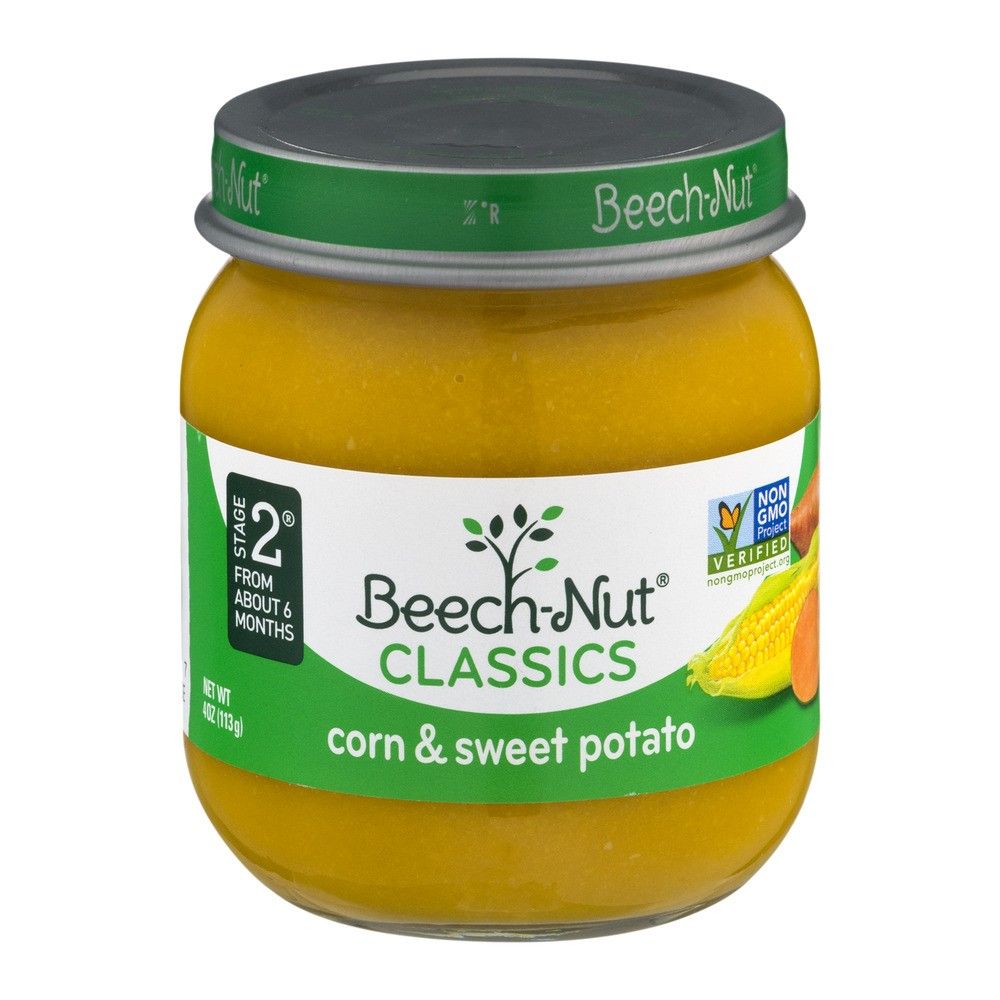 g., bananas), breast milk or formula, and a little bit of nut butter.
g., bananas), breast milk or formula, and a little bit of nut butter. - Use nut flour to bake baby-friendly treats, such as almond flour biscuits.
Most often, your baby will develop an allergic reaction within minutes to hours after eating nuts.
Symptoms to look for include:
- skin redness or itchy rashes
- hives (red spots that look like mosquito bites)
- vomiting
- trouble breathing
- swelling of the lips and tongue
- sneezing or stuffy nose
- shortness of breath
- coughing or wheezing
- diarrhea
- pale skin
- loss of consciousness
- anaphylaxis (which requires immediate medical treatment because it can be life-threatening)
If you notice a mild reaction, call your pediatrician. If your baby develops a severe reaction, call 911 or your local emergency services.
To be extra safe, Yan says he tells parents to have a children’s nonsedating antihistamine, like Children’s Zyrtec, on hand.
In addition, he says, “Whenever you plan to introduce a highly allergenic food to your child for the first time, we recommend picking a time and day that allows for you to closely monitor your child for up to 6 hours for signs and symptoms of an allergic reaction.”
Introducing your baby to nuts — or any potential allergen — is scary. It’s normal to feel anxious about it.
But remember: Early and consistent introduction will help protect your baby from severe allergies. And fewer allergies mean less stress later on.
Can children have nuts and seeds? At what age to give nuts to children
Despite all the positive qualities of seeds and nuts, there are some restrictions for their use in the children's diet:
- Whole nuts and seeds are not recommended for young children (under 3 years old). With great care, nuts should be introduced into the diet of children over 3 years old, since nuts are highly allergenic foods;
- Allergic children should only be introduced to nuts after consulting a specialist, in the absence of an allergy to nuts, confirmed by negative results of allergological testing;
- Overweight children are advised to drastically limit their intake of nuts and seeds due to their high calorie content, in particular their high fat content;
- Children over 3 years old can be offered nuts and seeds as a dessert or as part of meals in the amount of 50 g 1-2 times a week, for example, muesli with nuts and seeds;
- It is not necessary to introduce bakery products containing seeds and nuts into the diet of a young child (up to 3 years old), since the calorie content of such products significantly exceeds age standards.
 Children over 3 years old can use such bread in the diet 2-3 times a week.
Children over 3 years old can use such bread in the diet 2-3 times a week.
In addition to natural seeds and nuts, there is a huge variety of roasted salted, glazed (in chocolate, fruit glaze) nuts and seeds, as well as confectionery products, for example, halva, gozinaki. The nutritional value of these products is somewhat reduced due to heat treatment, and the calorie content increases significantly due to enrichment with easily digestible carbohydrates.
Choose healthy foods for your baby
Given this, it is preferable to use natural nuts and seeds in small quantities in the nutrition of preschoolers.
Fans of roasted nuts should remember that with strong roasting (processing of fruits in an oven at high temperature for a long time - 7-15 minutes), nuts and seeds lose their useful properties, so it is better to just dry them, calcinate them (processing of fruits at high temperature). temperature, but within 3-5 minutes).
Hazard Features
Most types of nuts and seeds do not need to be cooked before consumption, but there are some fruits that require exceptions. Almonds contain up to 3-5% of amygdalin glycoside, the decomposition products of which give the nut bitterness and its characteristic almond smell. Almond kernels contain the enzyme emulsin. Under its influence, amygdalin is broken down with the release of hydrocyanic acid (hydrogen cyanide) - one of the most powerful poisons. Therefore, eating bitter almonds in raw form is unsafe for health.
Almonds contain up to 3-5% of amygdalin glycoside, the decomposition products of which give the nut bitterness and its characteristic almond smell. Almond kernels contain the enzyme emulsin. Under its influence, amygdalin is broken down with the release of hydrocyanic acid (hydrogen cyanide) - one of the most powerful poisons. Therefore, eating bitter almonds in raw form is unsafe for health.
When nuts are cooked, the emulsin is destroyed, and unchanged amygdalin is not dangerous. Therefore, before entering the distribution network, almonds are subjected to heat treatment. Raw cashews are also not marketed, as the highly caustic substance cardol is contained between the shell and the shell of the nut. Contact with skin causes severe chemical burns and allergic reactions. Therefore, before sending the nuts to the distribution network, they are very carefully removed from the shell and shell and subjected to a special heat treatment, in which the dangerous substance is destroyed.
Important!
Be aware that nut protein is a strong allergen that can cause allergic reactions in the form of skin rashes, coughs, sneezes, indigestion or even anaphylactic shock in children and adults with food allergies. Peanut protein is considered the most highly allergenic.
Peanuts and peanut butter are added to baked goods, yogurts, chocolates, desserts, cereals, and more, so if your child is intolerant to peanuts, read the ingredients on the label very carefully to avoid an unwanted reaction. If, nevertheless, the prohibited component got into the diet of your baby, and an allergy appeared, contact your doctor, in case of hives or Quincke's edema, call an ambulance immediately.
Some tips for choosing and storing nuts and seeds:
- Buy nuts and seeds whole, not chopped, ground or peeled, as nut kernels go rancid faster;
- Due to the high oil content of nuts and seeds, they quickly become rancid when stored for a long time in warm conditions.
 When buying nuts and seeds, pay attention to their color, including in section. Old rancid fruits are usually yellowish;
When buying nuts and seeds, pay attention to their color, including in section. Old rancid fruits are usually yellowish; - Moldy nuts are dangerous and harmful: under the influence of a mold fungus, aflatoxins are produced in the nucleoli - poisonous substances, therefore, if, after cracking a nut, you notice a cloud of pollen above it, throw it away without regret;
- To maximize the nutritional value of the product, it is better to store nuts and seeds unpeeled in a cool, dark place, then the fruits will be as good as new for several months. Peeled nuts and seeds are best stored in a tightly closed container, in which they can stay for up to a month, and in the refrigerator for up to two months.
Diversify your baby's diet by adding nuts. Remember the measure, and then your baby will receive only benefit and pleasure.
Nuts, honey and spices in baby food
Your baby has already got acquainted with vegetable purees and cereals, eats cottage cheese and meat with pleasure, and you want to diversify his diet? Do not rush to offer him products that can cause an allergic reaction.
These include nuts and honey, and seasonings irritate the still unformed digestive tract. Postpone getting to know them until the time the baby is three years old.
Honey in baby food
On the one hand, we all know about the wonderful qualities of honey. About how it is useful and important for adults. But should it be given to children? Honey is on the list of "Prohibited foods for children under one year old." It can cause allergic reactions in older children, so it is not recommended for children under three years of age.
The likelihood of an allergy is not the only reason for avoiding honey in baby food. In the first years of life, the child develops eating habits and ideas about what is tasty and what is not. You should not accustom your child to sweets and add honey or sugar to all cereals and desserts. However, you can sweeten food a little by adding crushed fruits or berries to porridge or cottage cheese - these are natural sweets that contain vitamins and minerals.
Seasonings in baby food
Many toddlers are reluctant to try new foods. Mothers of "little babies" have to be very resourceful in order to feed them. There is a temptation to improve the taste of cooked dishes and industrially produced purees. But should you add seasonings?
Unfortunately, the harm from such culinary experiments outweighs the benefits. Salt can disrupt the water balance of the baby's body. The dyes, preservatives, stabilizers, and flavor enhancers that many seasonings contain are not the substances that are needed in the diet.
You can stimulate the child’s appetite with “decorations”: draw a funny face on the porridge with cottage cheese or yogurt, add pieces of fruit or vegetables. Of course, you don't want to turn meals into a game, but the elements of creativity in serving baby food will help you interest your child and distract him from not wanting to eat dinner. A simple technique, when porridge or puree is laid out on a plate in the form of a funny figure, is almost always effective in stimulating a child's appetite.
Nuts in baby food
Nuts are a wonderful source of nutrients, many vitamins and minerals. But, at the same time, these are products with a high risk of developing an allergic reaction. Walnuts, almonds and hazelnuts are some of the most allergenic nuts. If the child has already had allergic reactions to any foods or the baby suffers from atopic dermatitis, then the risk of allergies increases. Postpone introducing nuts to your child's diet until he is three years old.
Allergies aren't the only reason why you shouldn't let your child snack on nuts. In the first years of life, you instill a culture of nutrition in your baby. This is not only the ability to use cutlery and behave at the table. This is the love of healthy food and the habit of proper diet. From the moment of the introduction of complementary foods and up to 1.5 years, children are recommended five meals a day, and after 1.5 years - four meals a day. If the baby gets used to eating at the same time every day, then he will not be tempted to “snack” between meals.





